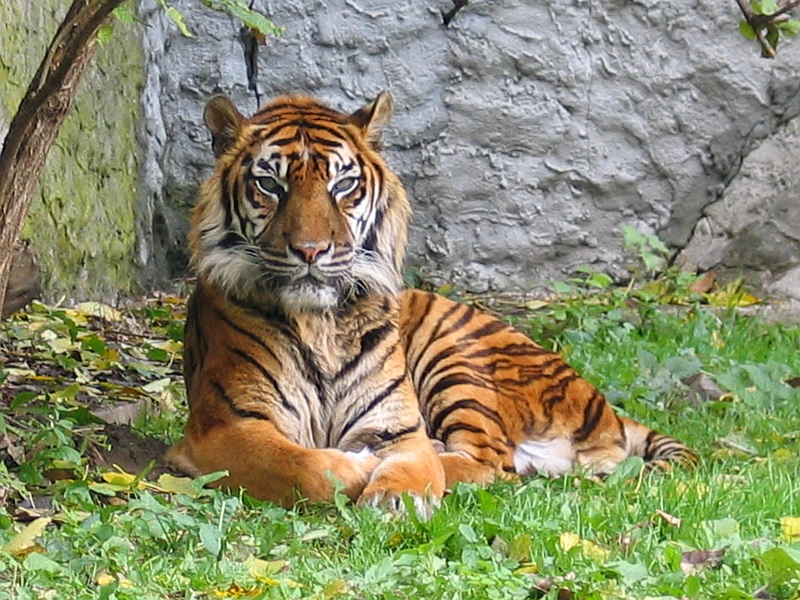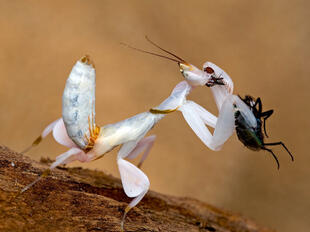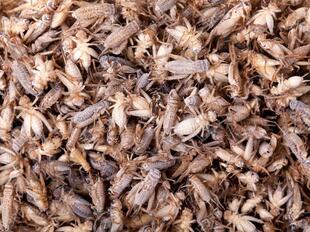
Tiger bengal
Phylum —chordata
Class — mammalia
Order — сarnivora
Family — felidae
Genus – panthera
Appearance
The Bengal tiger's coat is yellow to light orange, with stripes ranging from dark brown to black; the belly and the interior parts of the limbs are white, and the tail is orange with black rings.
Males have an average total length of 270 to 310 cm (110 to 120 in) including the tail, while females measure 240 to 265 cm (94 to 104 in) on average. The tail is typically 85 to 110 cm (33 to 43 in) long, and on average, tigers are 90 to 110 cm (35 to 43 in) in height at the shoulders. The weight of males ranges from 180 to 258 kg (397 to 569 lb), while that of the females ranges from 100 to 160 kg (220 to 350 lb).
The tiger has exceptionally stout teeth. Its canines are 7.5 to 10 cm (3.0 to 3.9 in) long and thus the longest among all cats.
Habitat
Bengal tigers live on small “islands” of livable habitat, surrounded by large patches of areas where no tigers can survive. Most of these populations live within wildlife refuges or sanctuary areas. There are various patches across India where tigers live, but large expanses of inhospitable areas separate them. These tigers also live in Bangladesh, Nepal, and Bhutan.
Behavior
Tigers live alone and aggressively scent-mark large territories to keep their rivals away. They are powerful nocturnal hunters that travel many miles to find buffalo, deer, wild pigs, and other large mammals. Tigers use their distinctive coats as camouflage (no two have exactly the same stripes). They lie in wait and creep close enough to attack their victims with a quick spring and a fatal pounce. A hungry tiger can eat as much as 60 pounds in one night, though they usually eat less.
Diet
The tiger is a carnivore. It prefers hunting large ungulates. Among the medium-sized prey species it frequently kills wild boar, and occasionally hog deer, muntjac and grey langur. Small prey species such as porcupine, hares and peafowl form a very small part in its diet. Because of the encroachment of humans into tiger habitat, it also preys on domestic livestock.
Bengal tigers occasionally hunt and kill predators such as Indian leopard, Indian wolf, Indian jackal, fox, mugger crocodile, Asiatic black bear, sloth bear.
Reproduction
Males reach maturity at 4–5 years of age, and females at 3–4 years.The tiger in India has no definite mating and birth seasons. Most young are born in December and April.
After a gestation period of 104–106 days, 1–4 cubs are born in a shelter situated in tall grass, thick bush or in caves. Newborn cubs weigh 780 to 1,600 g (1.72 to 3.53 lb) and they have a thick wooly fur that is shed after 3.5–5 months. Their eyes and ears are closed. Their milk teeth start to erupt at about 2–3 weeks after birth, and are slowly replaced by permanent dentition from 8.5–9.5 weeks of age onwards. They suckle for 3–6 months, and begin to eat small amounts of solid food at about 2 months of age. At this time, they follow their mother on her hunting expeditions and begin to take part in hunting at 5–6 months of age. At the age of 2–3 years, they slowly start to separate from the family group and become transient – looking out for an area, where they can establish their own territory. Young males move further away from their mother's territory than young females.
In captivity
In captivity, Bengal tigers can live as long as 18 to 20 years.
Tigers need a lot of secure space. They can jump, climb, and swim their way out of most enclosures. In the wild, they roam on several miles of land, so a large plot (several acres) of fenced-in property with access to ponds or small lakes, trees, and shelters is what a tiger needs to be safe from the world—and to keep humans safe from them.
Even with a large enclosure, the owner must provide enrichment opportunities. Tigers need to use their brains to catch, play, jump, climb, and explore. A bored tiger is an unhealthy tiger. Zoos often use large plastic balls that tigers will jump on in pools and offer hanging containers with food inside or areas to climb in and on.
A tiger may consume up to 88 pounds of meat at one time: antelope, gazelle, water buffalo, deer, fish, and anything else they can get their opportunistic paws on make up a tiger's diet.
According to the Smithsonian National Zoo, the tigers in a zoo mostly eat ground beef. Their diet is supplemented with "enrichment items," such as knucklebones, cow femurs, and rabbits.
 Russian
Russian
 English
English
























